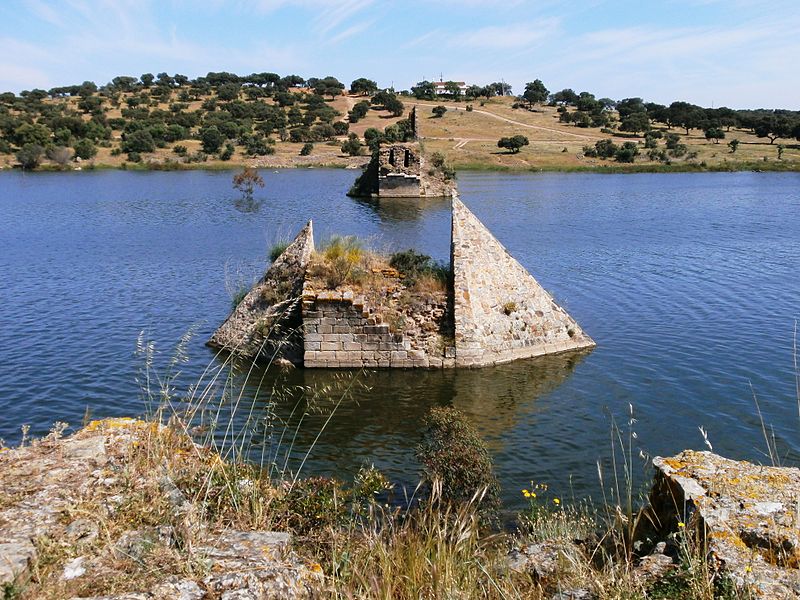Ponte da Ajuda


Facts and practical information
The Ponte da Ajuda, an evocative historical landmark nestled along the serene border between Portugal and Spain, stands as a testament to the architectural prowess and the turbulent past of the Iberian Peninsula. This ancient bridge, which once spanned the Guadiana River, was constructed during the reign of King Manuel I of Portugal in the 16th century, serving as a crucial crossing point and a symbol of the connection between the two nations.
Although time and conflict have taken their toll, the Ponte da Ajuda remains a poignant relic of bygone days. The original structure was partially destroyed in the 17th century during the War of the Spanish Succession, leaving behind a fragmented silhouette that speaks volumes of its former grandeur. What once was a fully functional bridge is now a series of arches that abruptly end, severed from its counterpart on the opposite bank.
Today, the remnants of the Ponte da Ajuda are a magnet for history enthusiasts and those drawn to the romantic allure of ruins. Visitors to the region can wander among the remains, marveling at the craftsmanship of the masonry and the resilience of the structure that has weathered centuries of history. While it no longer serves its primary purpose as a bridge, Ponte da Ajuda has bridged the gap between the present and the past, offering a unique glimpse into the architectural and cultural legacy of Portugal.
Portalegre
Ponte da Ajuda – popular in the area (distance from the attraction)
Nearby attractions include: Castelo de Juromenha.

